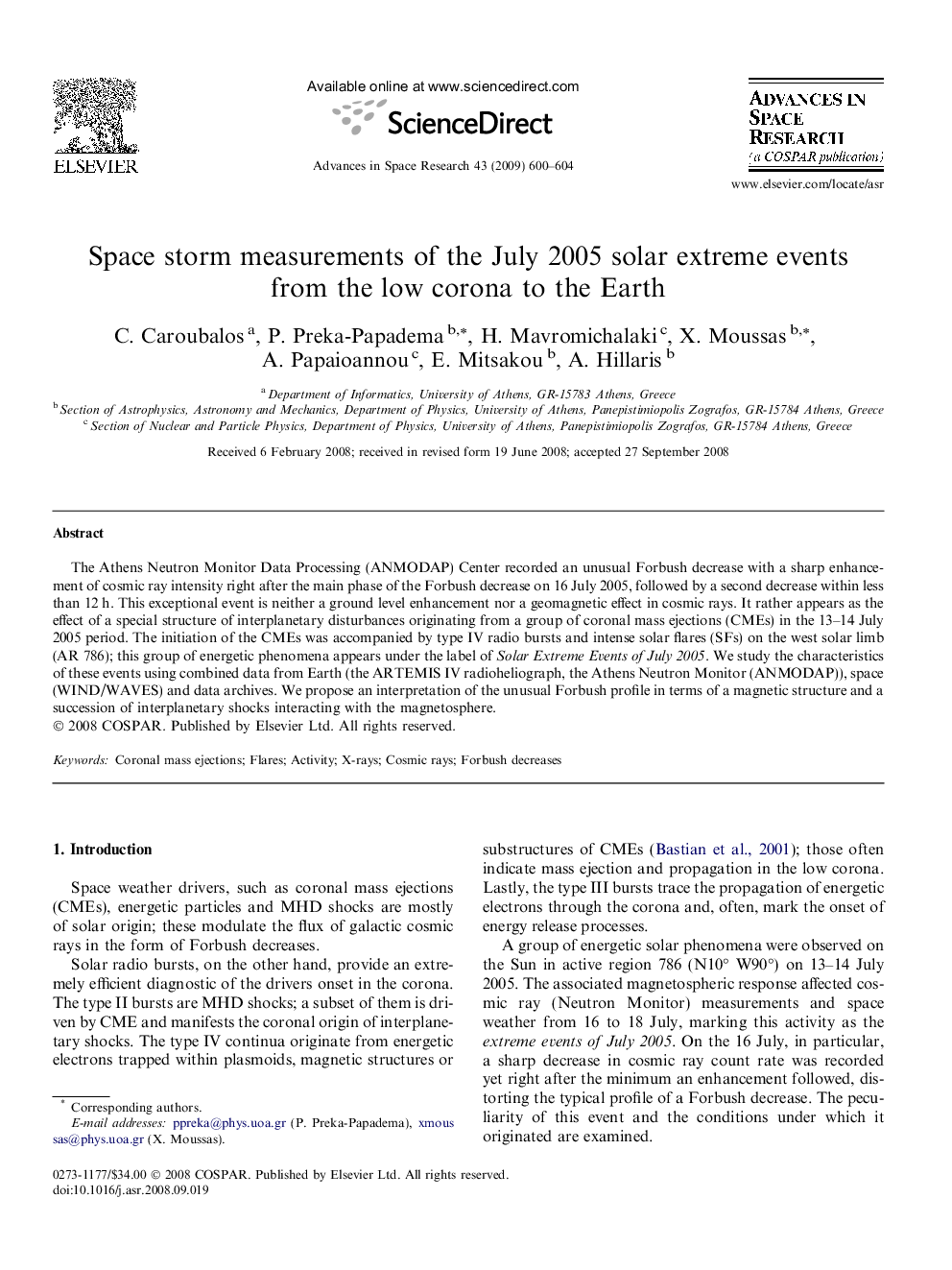| Article ID | Journal | Published Year | Pages | File Type |
|---|---|---|---|---|
| 1766433 | Advances in Space Research | 2009 | 5 Pages |
The Athens Neutron Monitor Data Processing (ANMODAP) Center recorded an unusual Forbush decrease with a sharp enhancement of cosmic ray intensity right after the main phase of the Forbush decrease on 16 July 2005, followed by a second decrease within less than 12 h. This exceptional event is neither a ground level enhancement nor a geomagnetic effect in cosmic rays. It rather appears as the effect of a special structure of interplanetary disturbances originating from a group of coronal mass ejections (CMEs) in the 13–14 July 2005 period. The initiation of the CMEs was accompanied by type IV radio bursts and intense solar flares (SFs) on the west solar limb (AR 786); this group of energetic phenomena appears under the label of Solar Extreme Events of July 2005. We study the characteristics of these events using combined data from Earth (the ARTEMIS IV radioheliograph, the Athens Neutron Monitor (ANMODAP)), space (WIND/WAVES) and data archives. We propose an interpretation of the unusual Forbush profile in terms of a magnetic structure and a succession of interplanetary shocks interacting with the magnetosphere.
